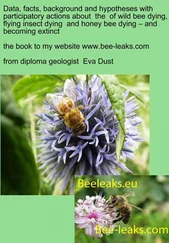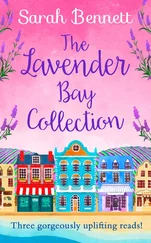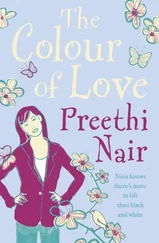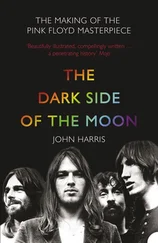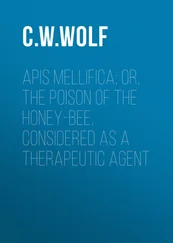He turns away, but I can’t let Mum’s colour go.
‘I used to talk about Mum being cobalt blue when I was little?’ I press. ‘I never mentioned another shade of blue? Like cerulean?’
‘Let’s not do this now. It’s late. You’re tired. I’m beat too.’
He means he doesn’t want to talk about my colours again. He wants me to pretend I see the world like he does, monochrome and muted. Normal.
‘This is important. I have to know I’m right.’ I kick off the duvet, which is strangling my feet.
‘What am I thinking? Of course she was cobalt blue.’ Dad’s voice is light enough to be swept away by a gentle summer breeze. ‘Don’t get het up about this before bedtime. You need to go to sleep. It’s school tomorrow and I’ve got work. I can’t take another day off. You have to stop thinking about Bee and start concentrating on school. Your stomach looks a lot better, but you need to get your head straight. OK?’
He comes back, leans down and kisses my forehead. ‘Good night, Jasper.’
Four large strides and Dad’s at the door. He closes it to the usual gap of exactly three inches.
He’s told yet another lie.
This isn’t a good night. Far from it.
I wait until I hear the dark maroon creak of the leather armchair in the sitting room before I leap out of bed and snatch up the paintings of Mum’s voice again.
Her exact shade of cobalt blue doesn’t come ready-mixed in a tube. It has to be created. I’ve tried to change the tint by adding white and mixed in black to alter the shade, but everything I attempt is wrong.
If these pieces of art are misleading me, are my other paintings a series of lies too? I sift through the boxes in my wardrobe and retrieve all the paintings from the day Bee Larkham first arrived and onwards. There are seventy-seven in total, which I sort into categories: the parakeets; other bird songs; Bee’s music lessons; everyday sounds.
I’m not worried about these pictures. Their colours can’t harm me.
Not like the voices, which I arrange into separate piles to study their colours in more detail: Bee Larkham. Dad. Lucas Drury. The neighbours.
All the main players.
I painted them to help remember their faces.
Some paintings refuse to get into order. The colours of conversations bleed into each other and transform into completely different hues.
That’s when I finally see what was never clear before. It’s where my problems began and it’s why I can’t get Mum’s voice 100 per cent right: I no longer know which voice colours are right and true, which are tricking me and which are downright liars.
I need to start again. I’ll never know what happened unless I get them right. Until I sort the good colours from the bad.
I wet a large brush and mix cadmium yellow with alizarin crimson paint on my palette.
I feel calmer and stronger. I’m in control. I’m going to paint this story from the beginning – from 17 January – the day it began. My first painting is called: Blood Orange Attacks Brilliant Blue and Violet Circles on canvas .
I will force the colours to tell the truth.
One brushstroke at a time.

17 JANUARY, 7.02 A.M.
Blood Orange Attacks Brilliant Blue And Violet Circles on canvas
THE GRATING BLOOD ORANGE tinged with sickly pinks demanded my undivided attention as three magpies argued noisily with an unidentified bird in the oak tree of number 20’s overgrown front garden. The house had been empty since we’d moved in ten months ago and various species of birds had staked claims to the trees and foliage.
I watched the magpies spitefully flutter and fight through the binoculars Dad had bought me for Christmas. Normally, I used them to spot the birds making colours in Richmond Park during our Sunday afternoon walks: the lesser spotted woodpeckers, chiffchaffs and jays. I couldn’t see what bird the magpies argued with, but I already respected it. Although outnumbered, it bravely held its ground. The bird remained hidden behind a branch, its voice colour drowned out by new, spiky ginger brown shapes.
A large blue van had pulled up outside the house, but the magpies didn’t break off from their vicious attack. A man wearing jeans and a navy blue sweatshirt climbed out and walked up the path to the front door. I thought just one man heaved furniture to and from the van, until I saw two men in jeans and navy sweatshirts carrying a chest of drawers.
I didn’t pay too much attention because two more magpies had landed in the tree. The three bullies had called for backup.
Then, something extraordinary: a parakeet shrieked at the magpies – brilliant blue and violet circles with jade cores – and soared into the sky.
Come back!
I opened my mouth to shout, but my throat was dry with excitement and no words came out. I’d only ever seen parakeets in Richmond Park, never here on my street.
I put my binoculars down and made a note of the parakeet in my light turquoise notebook, where I recorded all the birds I spotted in the park and on our street. I didn’t bother with the magpies. I’ve always disliked their pushy colours.
Across the road, the men continued with their work. Backwards and forwards . They lugged mattresses and boxes out of the house and squeezed them into the back of the van.
I scanned the branches with my binoculars, but I couldn’t spot the parakeet in the trees further down the road. The magpies had flown off too, proving the pointlessness of their territorial battle.
I continued to watch the tree, furious I may have missed another glimpse of the parakeet. When Dad told me it was time for school, I wouldn’t budge from the window. He tried to pull me away, but I screamed until my nose bled down my chest. I didn’t have a clean white shirt because Dad had forgotten to put a wash on again, so we agreed I could stay off school while he worked on a new app design in the study.
Long after the men’s unpleasant-coloured shouts and the sharp yellow spines of the van’s revving engine had died away, the street remained strangely quiet. I didn’t hear the colour of a single chaffinch or sparrow, a car horn beeping or a door slamming.
Maybe I blocked out other noises as I stood guard at the window. I focused on the tree in the front garden of 20 Vincent Gardens, not the house, but I don’t think anyone went in or out. Nothing happened.
It was the calm before the storm; the whole street waited with bated breath for the parakeet to return.
THAT EVENING, 9.34 P.M.
Carnival Of The Animals With A Touch Of Muddy Ochre on canvas
The windows of 20 Vincent Gardens swung open and loud music poured out, like a long, windy snake trailing across the road and up to my bedroom, tap-tapping on the window. Tap-tapping on all the windows in the street.
I’m here. Notice me.
The colours arrived with a bang and drifted into each other’s business, disrupting everything.
Some might call them a nuisance. They certainly did that night and in the weeks and months to come.
The glossy, deep magenta cello; the dazzling bright electric dots of the piano and the flute’s light pink circles with flecks of crimson formally announced that someone new had arrived on the street.
A person as well as a parakeet. They wanted to be seen. They loved loud, bright music as much as me.
Later, much later, I discovered this glorious music was called The Carnival of the Animals . Fourteen movements by Camille Saint-Saëns, a French Romantic composer, who wrote music for animals: kangaroos, elephants and tortoises. I loved the colours of Aviary , birds of the jungle, the most, but that evening was the turn of the Royal Lion.
Читать дальше





